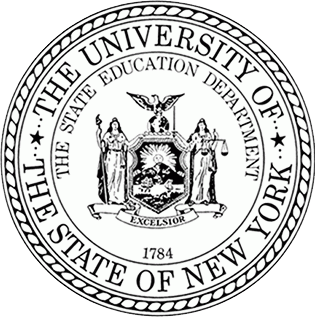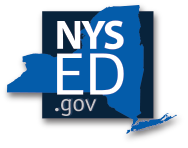FOR IMMEDIATE RELEASE

New Data Show: New York State Raises Percent Of Highly Qualified Teachers In All Subjects
New York State raised the percent of core classes taught by highly qualified teachers in all subjects between 2005-06 and 2006-07. More significantly, New York also narrowed the gap between high and low poverty school districts.
The gap narrowed especially at the elementary school level, from a 16 percent gap in 2004-05 to a 4 percent gap in 2006-07. In middle and high schools, the gap was wider and only narrowed from 16.9 percent in 2004-05 to 13.2 percent in 2006-07.
New York City continued to improve with more highly qualified teachers in every subject. Nearly 91 percent of its core classes in 2006-07 were taught by highly qualified teachers, up from 79 percent in 2004-05.
“The Board of Regents is intent on closing the student achievement gap,” State Board of Regents Chancellor Robert M. Bennett said. “The percent of classes in core academic subjects taught by highly qualified teachers must increase, especially for the neediest students. We are making progress, but these data show we still have far to go in some key areas.”
“We know that school districts across the State are working to increase the number of core classes taught by highly qualified teachers, and their efforts overall are working,” State Education Commissioner Richard Mills said. “However, we continue to have troubling shortages of qualified teachers in key subjects. We are working with schools and colleges to develop, recruit and keep the best qualified teachers. The problems are primarily in the high need districts.”
Despite the improvement, several of the Big 5 Cities still have relatively high percentages of teachers in some subjects who did not meet the federal definition of highly qualified in the No Child Left Behind Act (NCLB).
The sciences were a subject area with a significant percent of classes taught by teachers who were not highly qualified. Over 16 percent of classes in Earth Science in New York State were taught by teachers who were not highly qualified. The rates were 25 percent in New York City, 42 percent in Rochester and 43 percent in Syracuse.
High poverty middle and high schools also remain a challenge. Despite steady improvement, only 83.9 percent of core classes last year were taught by highly qualified teachers in these schools where performance remains low and is resistant to improvement.
Next month, the Regents will meet in Yonkers to study the special needs of urban teachers and strategies to recruit, retain and support highly qualified teachers for those schools. Further strategies and actions are being taken to insure that New York State students are taught by highly qualified teachers.
The State Education Department is conducting a review of certification requirements for teaching in three areas where highly qualified teachers are in short supply: special education for grades 7-12, the sciences and for languages other than English.
Five regional pilot partnerships have been developed among school districts, BOCES, and teacher preparation institutions to increase the supply of teachers in shortage subject areas and hard-to-staff schools.
Data collected by the Education Department on teacher supply and demand is being used more widely on regional levels to inform teacher preparation program planning and decision making.
The Regents continue to advocate that retired teachers and other public employees be allowed to re-enter the workforce without pension penalty where they are needed.
These actions build upon key reforms in teaching that the Regents have enacted during the past several years:
- Eliminated 16,000 uncertified teachers. In 2001, New York State issued 16,000 temporary licenses to teachers who were not certified. No teachers can get temporary licenses now.
- Created alternative pathways to recruit experienced professionals. This has contributed to significant increases in math and science teachers certified during each of the past several years.
- Required all teacher education programs to meet higher standards and be accredited.
- Required new teachers to have a major in the subject for which they are certified.
- Required new teachers to pass the Content Specialty Test.
- Required that teachers get 175 hours of professional development tied to the learning standards.
The NCLB defines highly qualified teachers as teachers who:
• have a bachelor’s or higher degree;
• meet State certification requirements; and
• demonstrate knowledge of the core academic subjects they teach in one of the ways required by the NCLB.
The attached slides provide details about the new data.
|
Percent of Core Classes Not Taught by Highly Qualified Teachers by Subject 2006-07
(Numbers in parentheses show the percent in 2004-05)
|
|||||||
|
Core
Subject Areas
|
NYS-All
Public Schools
|
Need/Resource Capacity (N/RC Category)
|
|||||
|
High Need Urban/
Suburban
Districts
|
High Need Rural Districts
|
Average
N/RC
Districts
|
Low
N/RC
Districts
|
BOCES and State Schools
|
Charter Schools
|
||
|
Elementary (one or more subjects)
|
2.2% (4.3)
|
1.3% (2.2)
|
0.8% (0.8)
|
0.5% (0.9)
|
0.5% (1.2)
|
2.1% *
|
13.6% *
|
|
English
|
4.5% (8.7)
|
2.2% (4.2)
|
1.2% (2.3)
|
1.4% (2.1)
|
1.6% (2.0)
|
7.5% *
|
27.2% *
|
|
Mathematics
|
3.6% (7.9)
|
2.3% (3.9)
|
2.0% (3.2)
|
1.0% (2.1)
|
0.9% (1.8)
|
7.9% *
|
31.6% *
|
|
Reading
|
3.3% (7.5)
|
3.2% (3.4)
|
2.1% (4.7)
|
1.7% (2.1)
|
1.6% (1.1)
|
2.9% *
|
24.7% *
|
|
Science
|
6.5% (9.7)
|
3.6% (5.0)
|
3.4% (4.6)
|
1.5% (2.8)
|
1.8% (2.2)
|
13.2% *
|
38.2% *
|
|
Social Studies (including civics and government, economics, geography and history)
|
3.0% (4.6)
|
1.5% (2.0)
|
1.5% (1.5)
|
0.9% (1.5)
|
0.7% (1.3)
|
4.2% *
|
28.5% *
|
|
Arts
|
4.4% (6.9)
|
1.8% (10.8)
|
1.1% (2.2)
|
1.3% (1.6)
|
1.3% (1.6)
|
3.4% *
|
33.8% *
|
|
Foreign Languages
|
8.2% (11.2)
|
6.7% (5.5)
|
10.3% (12.8)
|
5.3% (6.4)
|
4.0% (2.7)
|
29.1% *
|
60.4% *
|
|
All other core assignments (multiple subjects, unspecified subjects, etc.)
|
8.7% (10.2)
|
5.6% (5.5)
|
4.1% (4.5)
|
3.1% (2.6)
|
2.7% (2.2)
|
7.3% *
|
13.7% *
|
|
Total
|
4.3% (7.9)
|
2.6% (4.2)
|
2.1% (3.5)
|
1.4% (2.3)
|
1.4% (2.2)
|
7.6% *
|
21.2% *
|
|
*Data not available for 2004-05 and 2005-06
|
|||||||
|
Percent of Classes in Core Academic Subjects Taught by Highly Qualified Teachers
|
||||
|
|
2004-05
|
2005-06
|
2006-07
|
2 Year Change
|
|
New York State – All Public Schools
|
92.1
|
94.5
|
95.7
|
+3.6
|
|
New York City
|
78.6
|
87.0
|
90.8
|
+12.2
|
|
Buffalo
|
93.2
|
97.2
|
95.0
|
+1.8
|
|
Rochester
|
88.4
|
89.4
|
89.8
|
+1.4
|
|
Syracuse
|
90.7
|
89.4
|
92.3
|
+1.6
|
|
Yonkers
|
97.1
|
99.4
|
99.7
|
+2.6
|
|
High Need Urban/Suburban N/RC
Category
|
95.8
|
97.6
|
97.4
|
+1.6
|
|
High Need Rural N/RC Category
|
96.5
|
97.8
|
97.9
|
+1.4
|
|
Average N/RC Category
|
97.7
|
98.4
|
98.6
|
+0.9
|
|
Low N/RC Category
|
97.8
|
98.5
|
98.6
|
+0.8
|
|
Notes:
Some definitions changed between 2004-2005 and 2005-2006 in response to federal guidance and requirements to improve data quality.
|
||||
Media Contact
Reporters and education writers may contact the Office of Communications by email or phone at:
Press@nysed.gov
(518) 474-1201





